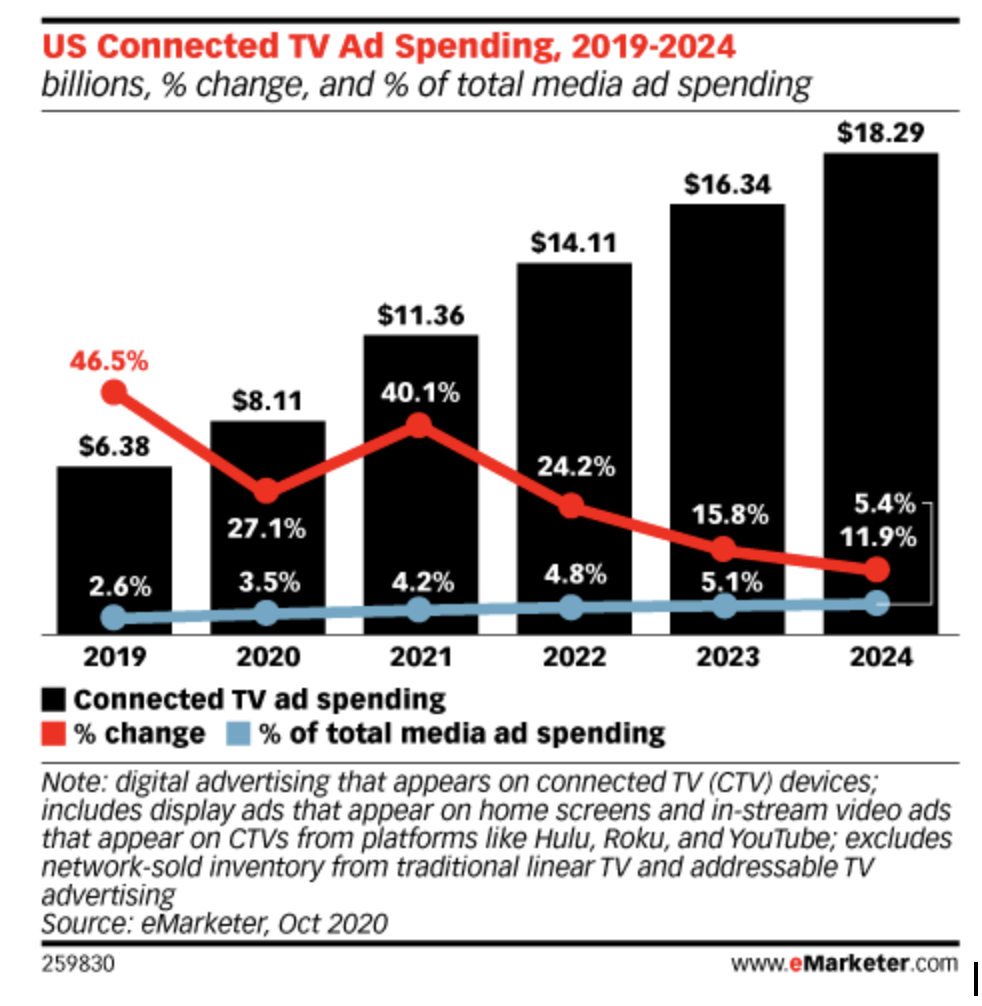What’s our CTV prediction for 2022?
If there’s one thing that exploded in 2020, it’s Connected TV (CTV). In the US, as much as 40% of adults watch CTV, and a good number of them watch ad-supported content. For this reason, eMarkert estimates CTV ad spending in the US to reach US$18.29 billion by 2024.

In the UK, more than half of the households are consuming content via CTV, which advertisers have mainly invested in.
Its popularity has surged exponentially, leading some to question if there’s still more to expect from CTV.
Or has it reached its limit?
Where Are We At?
At present, CTV continues to make waves in the advertising industry.
According to Insider Intelligence, approximately 213.7 million users consume content on CTV devices daily.
However, one sector—the direct-to-consumer (DTC) marketers have been slow in investing in CTV. A survey showed that only 10% of the 280 DTC brands plan to spend on CTV by the first half of 2022.
CTV still faces challenges, mainly concerns about measurement, accessibility, fragmentation, and even the lack of standard practices for its use.
Another concern that most advertisers deal with is how CTV is traded. More than half of CTV purchasing is not done programmatically, limiting marketers’ ability to deliver targeted and tailor-made ads efficiently. Ultimately, this can affect maximizing ad views, conversions, and revenues.
Our CTV Prediction: 2022 is the Year of CTV
While there is still room for growth and improvement, many advertisers have indeed leveraged the immense popularity and adoption of CTV. It’s safe to say that it’s still in its infancy. With its nascent format, there’s still so much more to explore to unleash its potential fully.
Flexibility from Platforms
Platforms like Roku, Amazon Fire, Apple TV, and others will embrace the fact that being more accommodating to advertisers is the way to increase their revenue streams. While they may still employ best practices, they will have a more open approach to benefit everyone, from advertisers, publishers, and consumers.
CTV Key to Brand Awareness
While CTV is already popular, global CTV adoption is still rife with opportunities. It’s not yet saturated, and this presents a perfect opportunity for brands to engage their target audience and increase brand awareness. CTV provides an affordable solution to advertisers to reach their audience on a more personal level.
Improving CTV Measurement Standards
One of the challenges of CTV advertising is the lack of measurement standards to measure success. With a CTV prediction of more growth, progress in developing the best practices for measurement will happen. When this happens, advertisers and publishers will be able to paint a better picture of their campaigns — see which areas can further be improved to boost their numbers.
The Growth of CTV and video is inevitable, and advertisers can lean on this opportunity to get an edge on the competition. Thankfully, AlgoriX provides an avenue for growth in addressable TV. Connect with us to learn more about how our solutions can boost your business.













